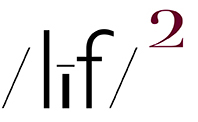all photos ~ (embiggenable)
“I like ambiguity in a photograph. I like it when one is not certain of what one sees. When we do not know why the photographer has taken a picture, and when we do not know why [when] we are looking at it, all of a sudden, we discover something that we start seeing. I like this confusion.” ~ Saul Leiter
TAKE A MOMENT AND CONSIDER THE WORD ambiguity. Various dictionaries define in word in much the same way; a situation in which something has more than one possible meaning and may therefore cause confusion….the possibility of interpreting an expression in two or more distinct ways. All of the dictionary definitions of the word are, coincidentally, un-ambiguous.
re: “ambiguity in a photograph”: in a very real sense, all photographs are ambiguous inasmuch as it rather difficult, if not impossible, to impose / imbue a single, exact meaning in a photograph that will be interpreted by every viewer in exactly the same manner. In that regard I am in the same boat as Susan Sontag:
“Photographs, which cannot themselves explain anything, are inexhaustible invitations to deduction, speculation, and fantasy…. while photographs capture a specific moment, they don't provide the full context or explanation…”
There are those photographers who, in an attempt to eliminate any ambiguity–re: what their photograph(s) are about, try to make excruciatingly obvious what they are trying to convey. The worst offenders are usually nature / landscape photographers who generally imply a single meaning–ain’t nature grand. iMo, photographs that try to force / ram–down–one’s_throat a single meaning on their viewers are the worst photographs on the planet….most often, simple meaning for simple minds.
The best photographs?, you might ask. Consider this:
“I think about photographs as being full, or empty. You picture something in a frame and it's got lots of accounting going on in it--stones and buildings and trees and air--but that's not what fills up a frame. You fill up the frame with feelings, energy, discovery, and risk, and leave room enough for someone else to get in there.” ~ Joel Meyerowitz
iMo, if you want to “leave room enough for someone else to get in there” when making a photograph, be ambiguous. In a very real sense, create and cultivate curiosity.
In my picture making, I depict the form I see as found on the picture-making canvas of the quotidian world. That M.O. most often mystifies many viewers of my photographs as often attested to by the frequent comment, “Why did you–or, why would you–take a picture of that?” ASIDE the same question could be directed at Saul Leiter and his photographs in the book Colors END SIDE. The only answer I can give to that question is that “I have left enough room in the picture for you get in there and discover what the picture is about. And, hint, it is not about ‘that’.”
Some questioning viewers might eventually “get” what the photograph is about if I go on to explain that the photograph is about a visual sense of form I see when I impose a frame on a section of the real world. Others may not. What I hope some viewers might “learn” is that I see the world in a manner, most likely, different from how they see the world. And, projecting outward from that realization, that other photographers might also see the world in a different manner than they do–or, for that matter, different than I do. Perhaps they might even realize that that is what makes the world go ‘round, re: good photography wise.
So, all of the above written, like Leiter, I’m all in ambiguity / confusion wise. That is to write, in both my photographs and those made by others. And, I am especially pleased that there are photographers–to include many of the greats–with whom I share similar sensibilities but who, nevertheless, see the world in their own particular way.

